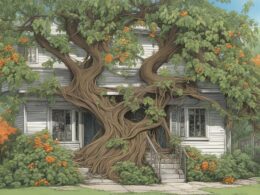Do you know what the rarest rose color is? It’s a mystery to many, but the answer might surprise you.
Roses come in a variety of colors, from classic red to soft pink, vibrant yellow to deep purple. But there’s one color that stands out from the rest, and it’s highly sought after by rose enthusiasts all over the world.
In this article, we’ll explore the world of rose colors and reveal the answer to the question: what is the rarest rose color? We’ll delve into the reasons why this color is so elusive, what makes it unique, and where you can find and appreciate it.
So, whether you’re a seasoned rose collector or simply curious about the beauty of these beloved flowers, read on to discover the secrets of the rarest rose color.
The Most Common Rose Colors
You’re probably wondering which rose colors are the most popular – well, the answer is red, pink, and white. Red roses symbolize love and passion, while pink roses represent admiration and appreciation. White roses symbolize purity, innocence, and sympathy.
These three colors are the most commonly used in bouquets, floral arrangements, and gifts on special occasions such as Valentine’s Day, Mother’s Day, and weddings.
The significance of different rose colors varies in different cultures. In some Asian cultures, red roses are considered lucky and a symbol of good fortune. In the Middle East, white roses are often used in funerals and represent the hope of a better afterlife. In Western cultures, yellow roses are associated with friendship, but in some Hispanic cultures, they are a symbol of death and mourning.
Knowing the symbolism and significance of different rose colors can help you choose the perfect bouquet or gift for any occasion. Whether you want to express love, admiration, or sympathy, there’s a rose color that can convey your message.
So, next time you’re choosing roses, keep in mind the different meanings behind each color and make your gift even more meaningful.
What is the Rarest Rose Color?
It’s not often you come across a bloom in such a unique and uncommon hue, but when you do, it’s a sight to behold.
The rarest rose color is blue, and it’s a color that has captivated gardeners and enthusiasts for centuries. Blue roses are significant because they are so rare, and they symbolize mystery, the impossible, and the unattainable.
Cultivating blue roses is a challenge because they don’t occur naturally. Breeding blue roses requires a lot of patience, skill, and dedication. Scientists have experimented with different methods of creating blue roses, including genetic modification and cross-breeding, but the results have been mixed.
The most successful method so far has been to introduce a gene from a blue-flowering plant into a rose, which can create a blue tint. Despite the challenges of growing blue roses, many gardeners and florists continue to pursue this elusive and beautiful flower.
They use various cultivation techniques, such as adjusting the soil pH, managing temperature and moisture levels, and using specialized fertilizers. The result is a stunning bloom that is sure to capture anyone’s attention.
In the end, the rarity and beauty of blue roses make them a coveted addition to any garden or bouquet. The mystery and allure of this unique color will continue to inspire gardeners and flower enthusiasts for generations to come.
Are Antirrhinums Prone to Slugs Eating Them?
Antirrhinums, commonly known as snapdragons, can be a favorite snack for slugs, due to their habit of munching on these vibrant flowers. Slugs and antirrhinums: eating habits depict a potential struggle for gardeners, as these slimy creatures are attracted to the soft foliage and delicate petals. Implementing slug deterrents and practicing regular monitoring can help protect these beautiful flowers from becoming a slug’s next feast.
Why is the Rarest Rose Color So Elusive?
You’ll feel like you’re on a treasure hunt when searching for the elusive bloom that’s as mysterious as a sapphire sky on a cloudy day. The rarest rose color is elusive because of genetic mutations. These mutations happen when there’s a change in the DNA of a plant, which can result in a new color.
Selective breeding also plays a role in the diversity of rose colors. Breeders choose plants with desirable traits, such as color, fragrance, and disease resistance, and cross them to create new varieties. Over time, this process has led to the wide range of rose colors that we see today.
If you’re on the hunt for the rarest rose color, keep in mind that it may take some time to find. But the search can be rewarding, and you may discover a new appreciation for the beauty and diversity of roses.
Whether you’re a gardener, a flower enthusiast, or simply someone who enjoys the simple pleasures in life, take a moment to stop and smell the roses. Who knows, you may even stumble upon a rare bloom that takes your breath away.
Possible discussion ideas:
- Have you ever seen a rare rose color? What did it look like?
- Do you think rose color diversity is important? Why or why not?
- Have you ever tried growing your own roses? What was your experience like?
- Have you ever given or received roses as a gift? What was the occasion?
- What other flowers do you think are beautiful and why?
What Makes the Rarest Rose Color Unique?
As you gaze upon the petals of the mysterious and elusive bloom, you’ll be struck by the uniqueness of its hue, unlike any other flower you’ve seen before.
The rarest rose color is known as ‘blue roses,’ and they’re not actually blue but instead, they have a tint of blue or violet. These roses are so rare because they’re not naturally occurring and require genetic modification to produce them.
What makes the rarest rose color unique is the fact that it doesn’t exist in nature. The blue pigment in these roses is not present in any other rose, which is why it’s so elusive. The unique characteristics of these flowers make them highly sought after by collectors and garden enthusiasts alike.
The scientific explanation behind the blue pigment in these roses is that it’s created through genetic modification. Scientists have found a way to transfer the gene responsible for producing the blue pigment from other flowers into the rose plant. Through a process of trial and error, they’ve been able to create these rare blue roses.
While they may not be naturally occurring, the beauty and uniqueness of these roses make them a prized possession for many.
Is the Rarest Rose Color Also the Longest-Blooming Flower?
When it comes to the rarest rose color, the flower with the longest bloom period may not necessarily have that distinction. While there are rare rose colors out there, such as blue and black, the longevity of a flower’s bloom is determined by its species and cultivation.
Where to Find and Appreciate the Rarest Rose Color
If you’re looking to add a touch of exotic beauty to your garden, exploring the world of genetically modified flowers is a great way to discover unique blooms that are sure to captivate your senses.
The rarest rose color can be found in some of the most unexpected places. One such place is the world-renowned David Austin Roses, a family-owned business that specializes in breeding and cultivating rare rose colors. Here, you’ll find the elusive Black Baccara rose, a deep, velvety, and dark red rose that is considered one of the rarest rose colors in the world.
Exploring symbolism is one of the many reasons why cultivating rare rose colors is so fascinating. The rarest rose colors can have a variety of meanings, from love and romance to death and mourning. The Black Baccara rose, for example, is often associated with death and darkness, making it a popular choice for funerals and somber occasions. However, it can also symbolize grace, elegance, and beauty, making it a great addition to any garden or floral arrangement.
If you want to appreciate the rarest rose color in all its glory, there are several places where you can find it. You can visit your local florist or garden center to see if they have any Black Baccara roses in stock. Alternatively, you can order them online from a reputable florist or grower.
You can also attend flower shows and exhibitions to see the rarest rose colors on display. No matter where you find them, cultivating and appreciating rare rose colors is a rewarding and enriching experience that’s sure to bring beauty and joy to your life.
Frequently Asked Questions
What are the meanings and symbolism behind the rarest rose color?
Did you know that rose color symbolism has been a part of flower language for centuries? Each color has a different meaning and symbolism behind it.
For example, red roses symbolize love and passion, while yellow roses symbolize friendship and joy. However, the rarest rose color, black, has a unique meaning. It symbolizes death and farewell, often seen in funeral arrangements.
While black roses do not naturally occur, they can be achieved through dyeing or breeding. Despite its rarity, the black rose carries a powerful message in the language of flowers.
Are there any cultural or historical references to the rarest rose color?
In art, the rarest rose color is often used to symbolize uniqueness and individuality. This color has a long history of being used in traditional practices, such as in medicine and dye-making.
In some cultures, the rare rose color has even been associated with royalty and luxury. Throughout history, artists have used this color to add depth and meaning to their works, evoking emotions such as passion, mystery, and creativity.
Whether it’s used in painting, fashion, or home decor, the rarest rose color remains a symbol of beauty and distinction.
Can the rarest rose color be artificially created or replicated?
Creating or replicating the rarest rose color artificially is an ongoing challenge for horticulturists and scientists alike.
While some roses come in naturally occurring shades of blue and black, the rarest rose color has yet to be found in nature.
In order to replicate this color, experts must experiment with different genetic mutations and crossbreeding techniques.
Despite their best efforts, the process of artificially creating the rarest rose color remains a mystery.
However, with continued research and experimentation, it’s possible that we may one day see this elusive color in our gardens.
Are there any health benefits associated with the rarest rose color?
There’s scientific research that suggests there may be potential health benefits associated with different varieties of roses, including the rarest rose color.
However, it’s important to note that these benefits aren’t yet fully understood or proven.
The availability of the rarest rose color may also be limited, which could make it difficult to access for those interested in exploring its potential benefits.
Nonetheless, for those who can obtain it, incorporating the rarest rose color into your life may provide a unique opportunity to explore the potential health benefits associated with this particular variety of rose.
Is there a specific time of year when the rarest rose color blooms?
To ensure that your rare rose colors bloom at their best, it’s important to understand the best growing conditions and how to care for them.
The ideal time for planting is in the early spring, after the last frost has passed. Make sure to choose a spot with plenty of sunlight, well-drained soil, and good air circulation.
Water your roses regularly and fertilize them at least once a year. Prune your roses in late winter or early spring to encourage new growth and remove dead or diseased branches.
With proper care, your rare rose colors will thrive and bloom beautifully year after year.
Conclusion
So, you’ve learned about the most common rose colors, but what about the rarest rose color?
It turns out that the blue rose is considered the rarest rose color. This elusive color has been sought after for years, but it wasn’t until recently that scientists were able to create a true blue rose.
The blue rose is unique not only for its rarity, but also for its symbolism. In many cultures, blue is associated with mystery, the unknown, and the impossible.
So, if you’re lucky enough to come across a true blue rose, take a moment to appreciate its beauty and the rarity of its existence.








